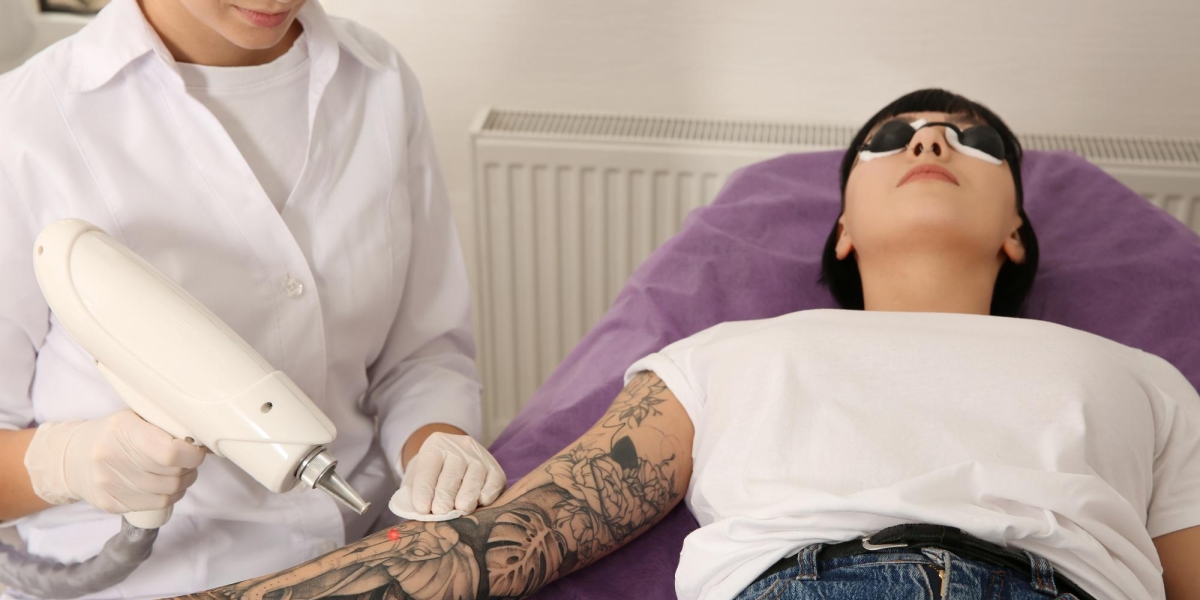Laser tattoo removal is a popular and effective method for erasing unwanted tattoos. Utilizing advanced laser technology, this procedure targets tattoo pigments with precision to break them down and allow the body to naturally eliminate the ink. Whether you're looking to remove a tattoo due to changing personal preferences, professional needs, or skin reactions, laser tattoo removal offers a viable solution. This guide provides an overview of how laser tattoo removal works, its benefits, the procedure, and what to expect before, during, and after treatment.
How Laser Tattoo Removal Works
-
Laser Technology:
- Q-Switched Lasers: The most commonly used lasers for tattoo removal, such as Q-switched Ndand Q-switched Ruby lasers, emit high-energy light pulses that target the tattoo ink. Different lasers are effective for different colors and depths of ink.
- Picosecond Lasers: A newer technology that uses shorter pulse durations than Q-switched lasers. It can be more effective in breaking down certain types of ink and requires fewer sessions.
-
Mechanism:
- Ink Fragmentation: The laser energy is absorbed by the tattoo ink particles in the skin. This causes the ink to break into smaller fragments.
- Natural Elimination: Once fragmented, the ink particles are gradually removed by the body's lymphatic system. Over time, the tattoo fades as more ink particles are processed and eliminated.
The Laser Tattoo Removal Procedure
-
Consultation:
- Assessment: A consultation with a qualified dermatologist or laser specialist is essential to evaluate the tattoo, skin type, and overall suitability for laser removal. Factors such as tattoo size, color, age, and depth influence the treatment plan.
- Treatment Plan: A personalized treatment plan is developed based on your specific needs and goals.
-
Preparation:
- Pre-Treatment Care: Follow pre-treatment instructions, which may include avoiding sun exposure, discontinuing certain medications, and discussing any medical conditions or concerns with your practitioner.
-
Procedure:
- Preparation: The area to be treated is cleansed, and a cooling gel or anesthetic may be applied to minimize discomfort.
- Laser Application: The laser is directed at the tattooed area in a series of pulses. You may feel a sensation similar to a rubber band snap or mild discomfort during the procedure.
- Duration: The duration of each session depends on the size and complexity of the tattoo. Smaller tattoos may take just a few minutes, while larger or more complex tattoos may require more time.
-
Post-Procedure Care:
- Aftercare Instructions: Follow any aftercare instructions provided by your practitioner, which may include applying soothing ointments, keeping the area clean, and avoiding sun exposure.
- Recovery: Some redness, swelling, and discomfort are common and typically subside within a few days. Blistering and scabbing may occur as part of the healing process.
Benefits of Laser Tattoo Removal
-
Effective Tattoo Fading:
- Precision: Targets the tattoo ink precisely, breaking it down effectively to achieve significant fading or complete removal.
-
Non-Invasive:
- Minimally Invasive: Provides a non-invasive method for tattoo removal with minimal risk of scarring compared to surgical options.
-
Customizable Treatment:
- Tailored Approach: Treatment can be customized based on the tattoo's color, size, and depth, as well as the individual’s skin type.
-
Advancements in Technology:
- Enhanced Results: Newer technologies, such as picosecond lasers, offer improved effectiveness and may require fewer sessions for certain types of ink.
Risks and Considerations
-
Possible Side Effects:
- Redness and Swelling: Mild redness, swelling, and discomfort are common but usually resolve within a few days.
- Pigmentation Changes: Temporary changes in skin pigmentation may occur, particularly in individuals with darker skin tones.
- Blistering and Scabbing: Temporary blistering and scabbing may occur as part of the healing process.
-
Consultation:
- Choosing a Provider: Select a qualified and experienced dermatologist or laser specialist to ensure the best results and minimize risks.
-
Multiple Sessions Required:
- Treatment Plan: Multiple sessions are typically needed to achieve complete removal or significant fading of the tattoo. The number of sessions required depends on factors such as tattoo size, color, and location.
-
Post-Treatment Care:
- Sun Protection: Use sunscreen and avoid direct sun exposure to protect the treated area and prevent pigmentation changes.
What to Expect After Treatment
-
Immediate Aftercare:
- Post-Treatment Care: Follow the aftercare instructions provided by your practitioner, including applying any recommended ointments and avoiding activities that may irritate the skin.
-
Long-Term Care:
- Sun Protection: Consistent use of sunscreen is crucial to protect the skin and maintain the results of the treatment.
- Follow-Up Appointments: Attend follow-up appointments as recommended to assess progress and determine if additional sessions are needed.
-
Results:
- Onset: Initial fading may be visible within a few weeks, with continued improvement over time as the tattoo ink is gradually eliminated.
- Longevity: Results are generally long-lasting, with significant fading or complete removal achieved after a series of sessions.
Conclusion
Laser tattoo removal offers an effective and non-invasive solution for erasing unwanted tattoos, providing precision and customization to achieve desired results. By understanding the procedure, benefits, risks, and what to expect during recovery, you can make informed decisions about whether laser tattoo removal is right for you. Consulting with a qualified specialist will ensure personalized care and optimal results, helping you achieve clear, tattoo-free skin with minimal disruption to your daily life.
